International Campus: a living laboratory for sustainability
[Editor’s note: Today, China celebrates its ninth annual National Low Carbon Day, a campaign created to boost awareness of energy efficiency and low-carbon development policies. Let’s visit ZJU's International Campus, the first university campus in China that has joined the Eco-Campus certification system and received a platinum award, to see how it commits itself to building a zero-carbon learning and working environment.]
Campus introduction
The International Campus covers an area of 666,700 square meters, with a total building area of 399,300 square meters. As of December 2020, the campus has been fully operational. There are 1973 students in the campus, with an increase of 81.5% over 2019; and 522 faculty and staff, with an increase of 4.8% over 2019.
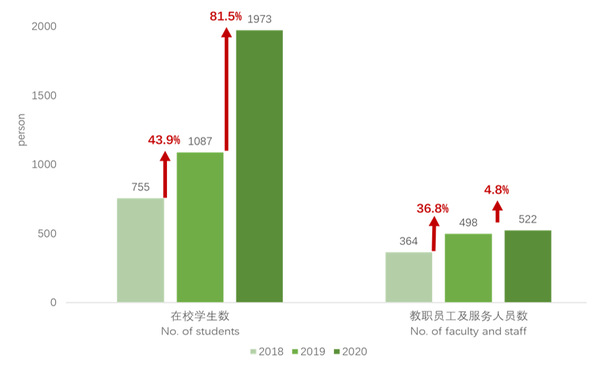
Total carbon emissions
GHG (Greenhouse Gas) emissions on International Campus in 2020 is equivalent to CO2e 10,753 tons. The direct GHG CO2e is 512.8 tons, including natural gas consumed by the canteen and teaching and research buildings, as well as diesel and gasoline consumed by shuttle buses and official vehicles. The indirect GHG CO2e is 10240.2 tons, mainly for electricity consumption. Direct GHG emissions have continued to decrease for three consecutive years; indirect GHG emissions increased by 10.4% compared with 2019. The growth rate has dropped significantly.
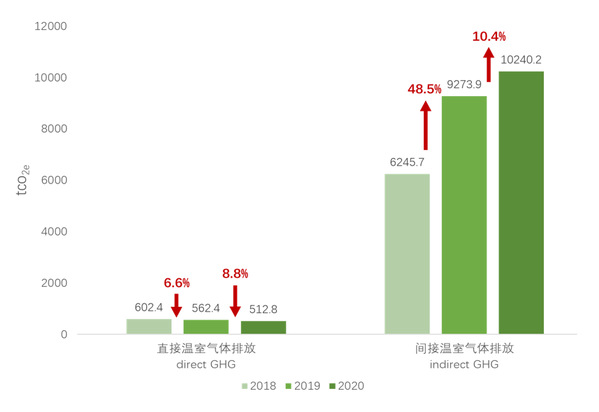
Campus carbon emission intensity
In 2020, the average CO2e is 5.45t accounted on students, and the average CO2e is 4.3t on all persons on campus, displaying a significant drop from 2019. The carbon emission per unit building area equivalent to the campus building area is 26.92kgCO2e/m2, and the carbon emission per unit area equivalent to the land area is 12.56kgCO2e/m2, both of which have been reduced year after year.
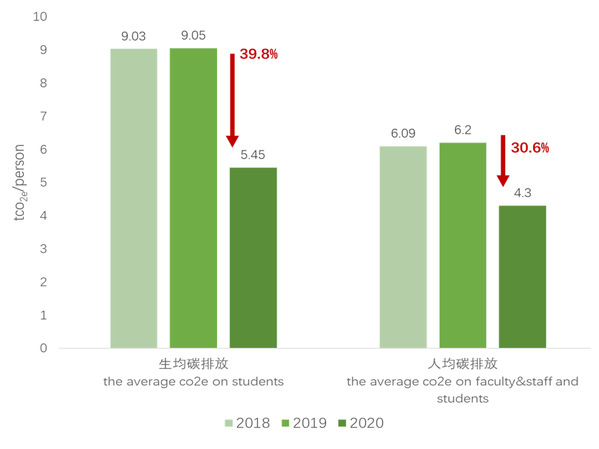
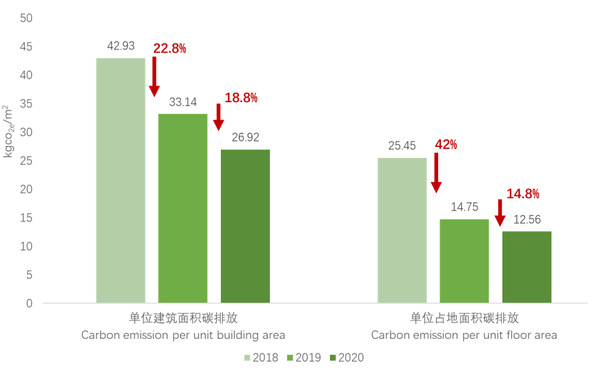
Carbon emission intensity of key buildings
After calculating the carbon emissions of the buildings with high energy consumption and large carbon emissions per unit building area in the International Campus, the carbon emissions of key buildings account for 65.65% of the total campus emissions. The average floor area carbon emission intensity of the key buildings is 29.9kgCO2e/m2.
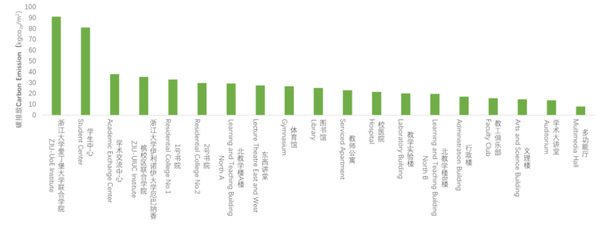
Carbon emission report (full text)
To view more comprehensive campus carbon emissions data, please click to view 2020 Accounting Report on Carbon Emission for International Campus, Zhejiang University.